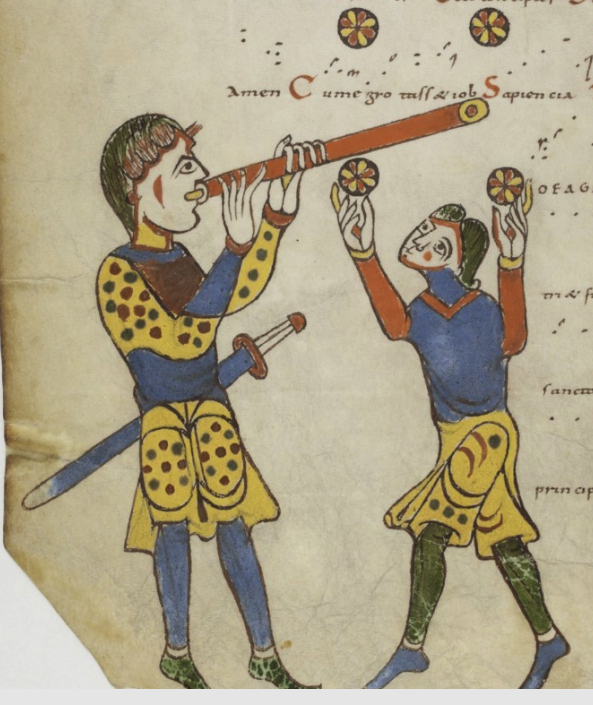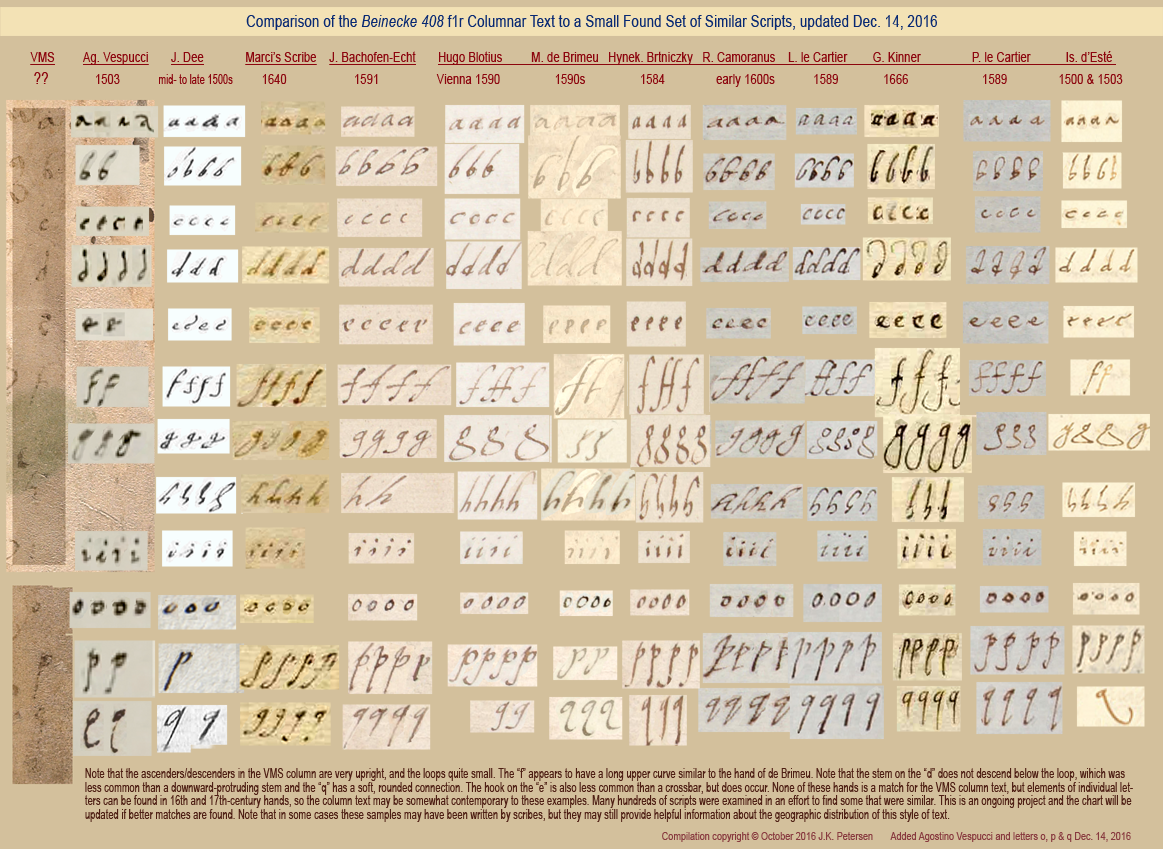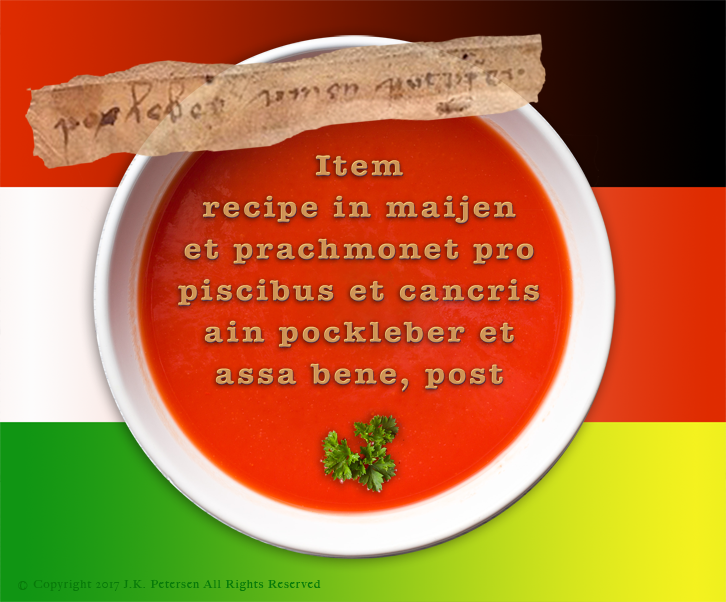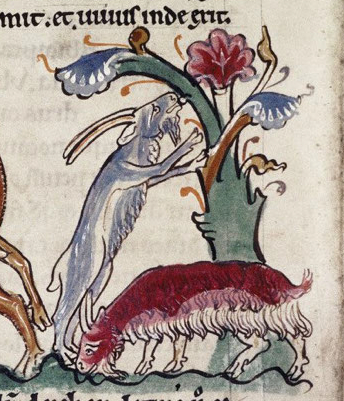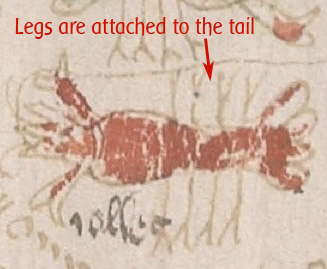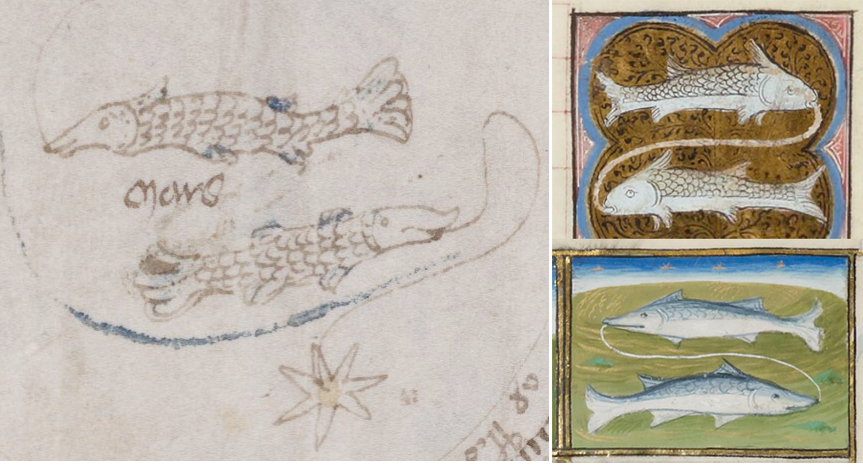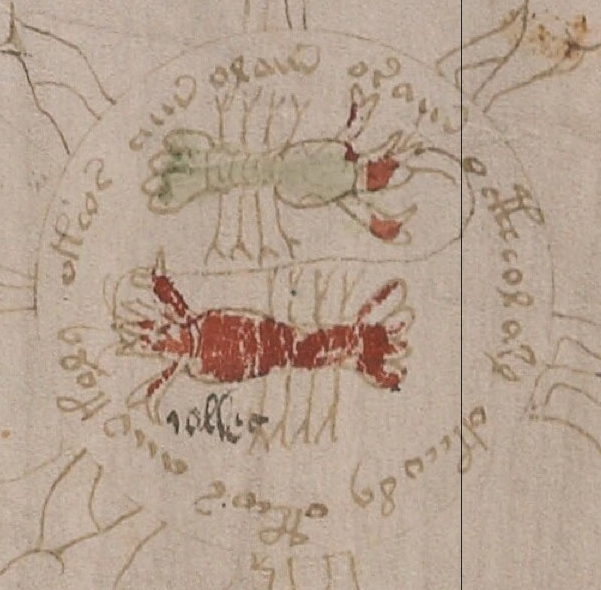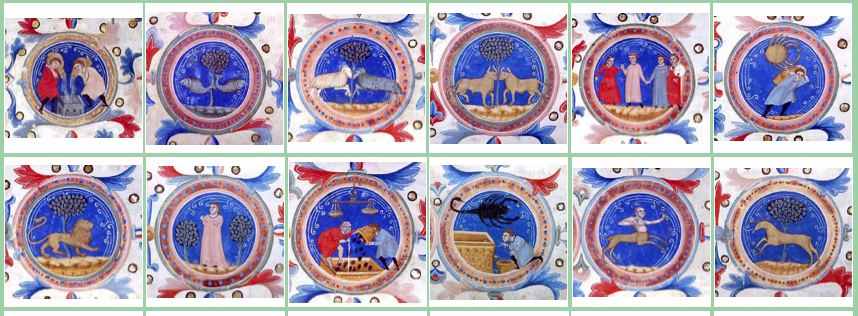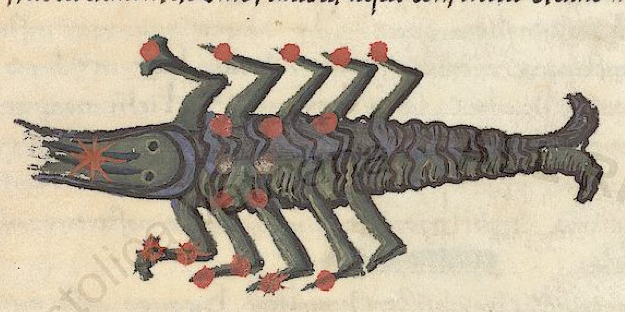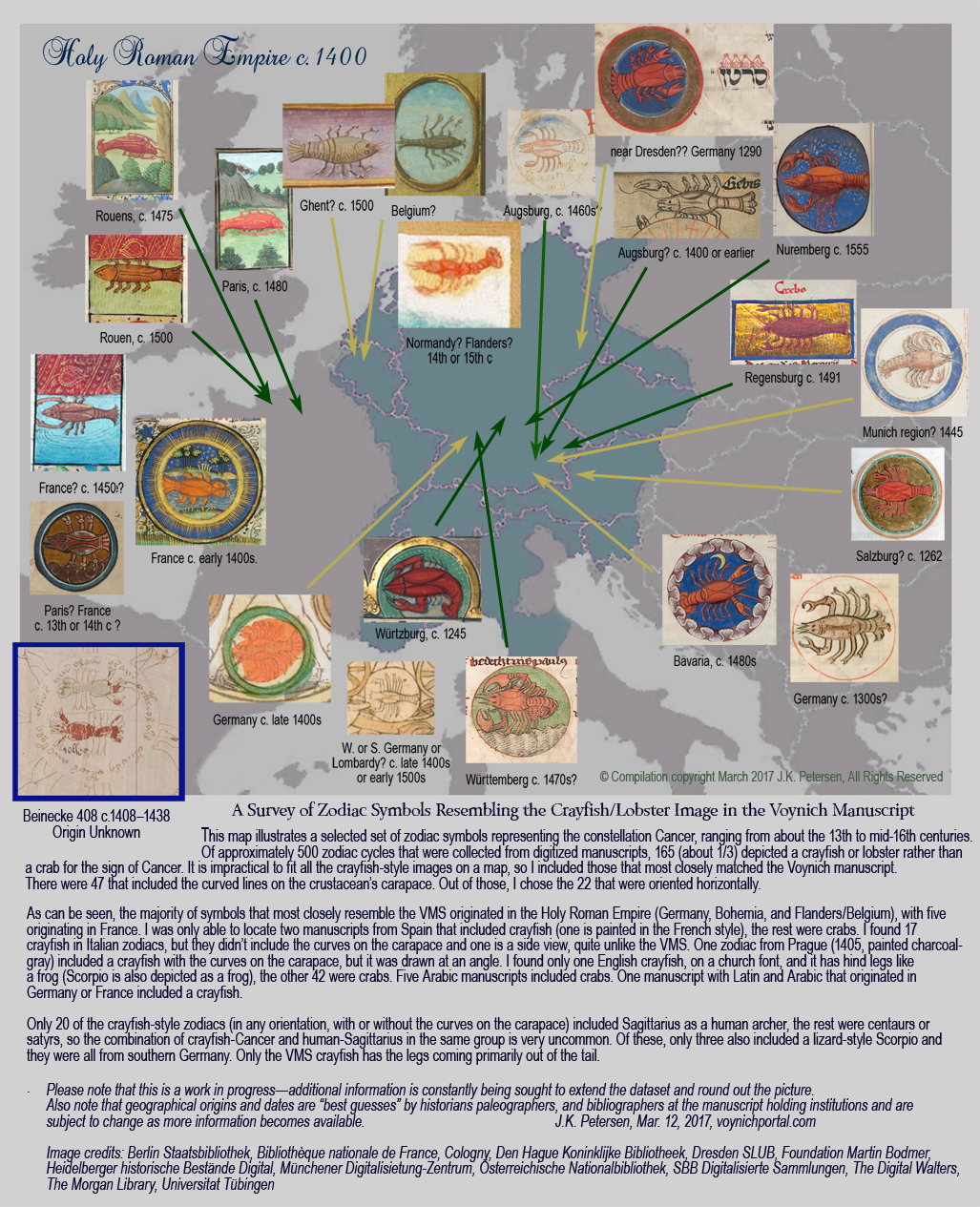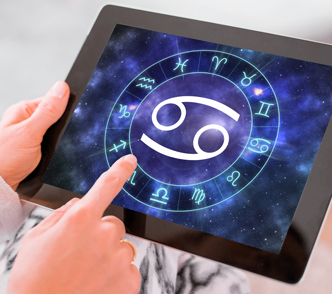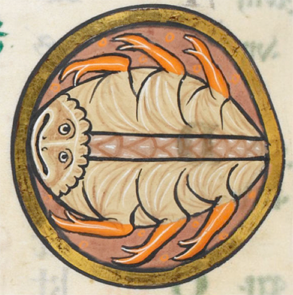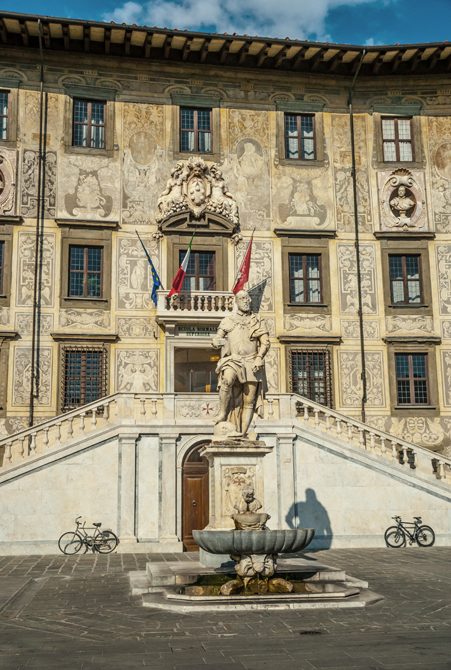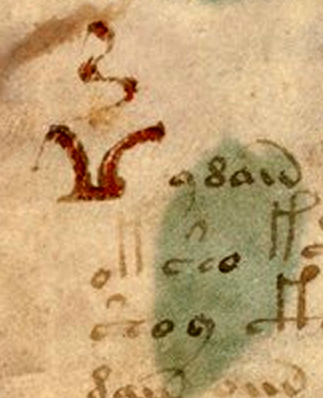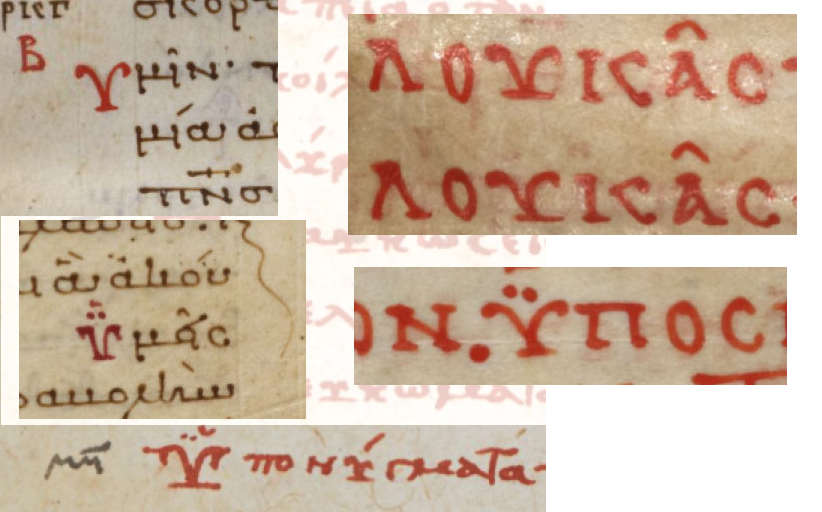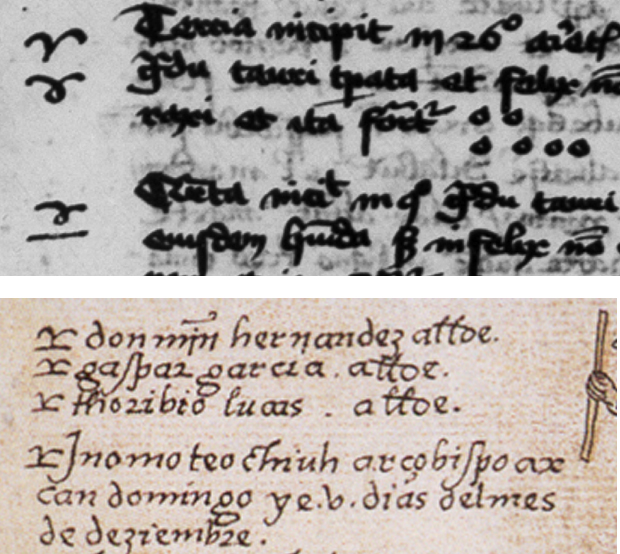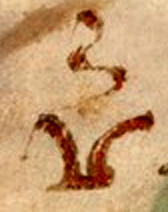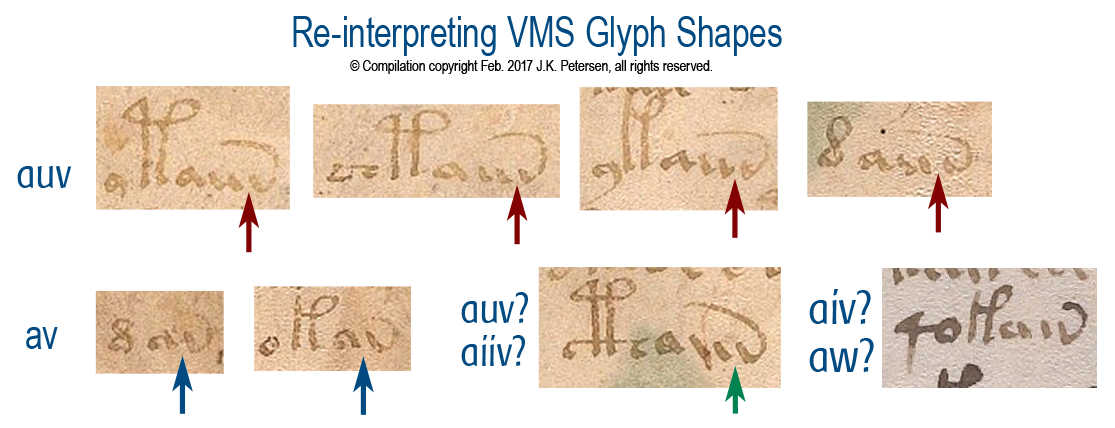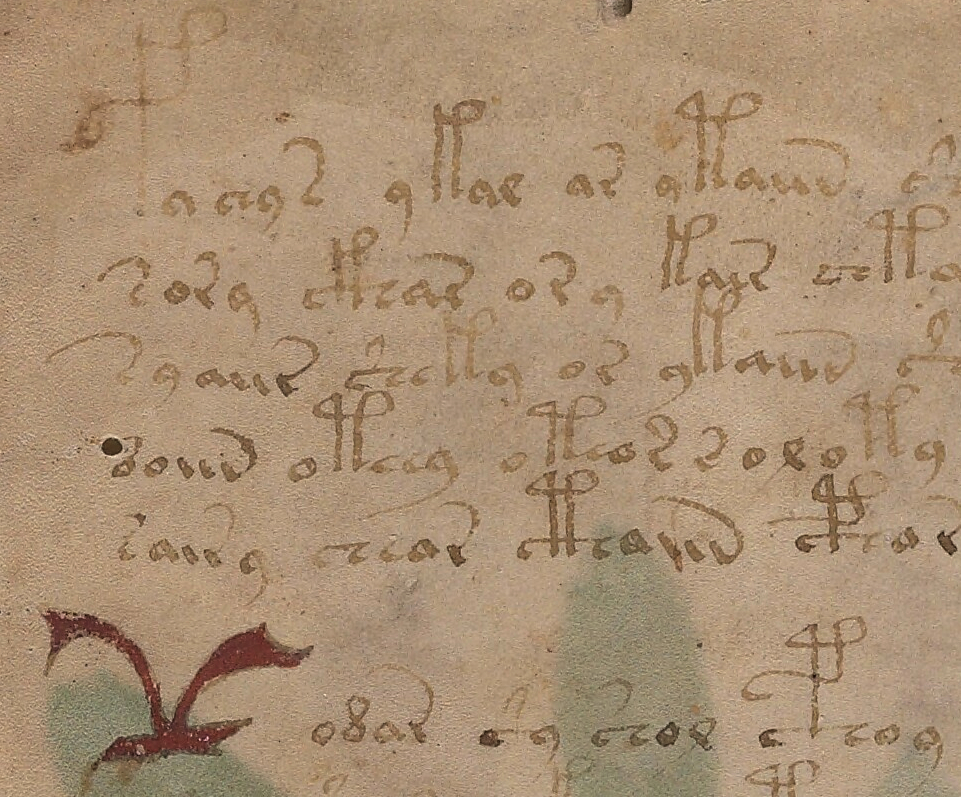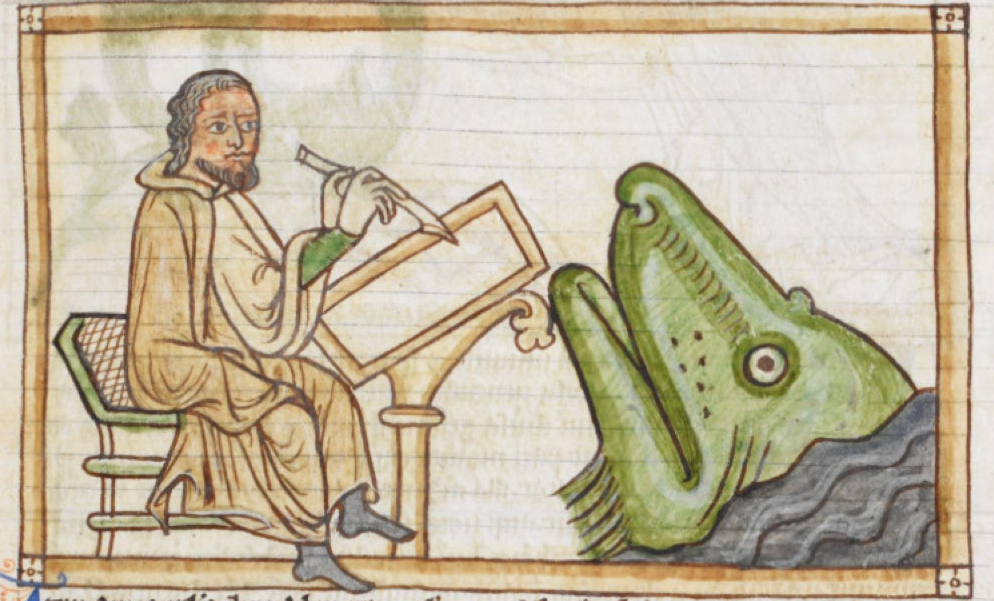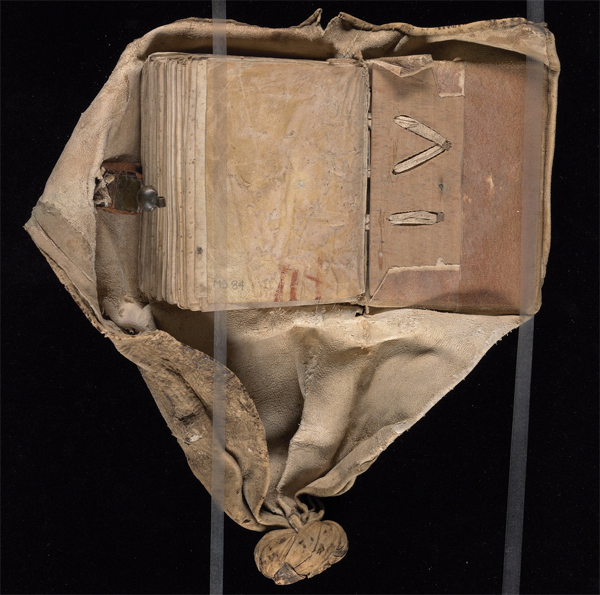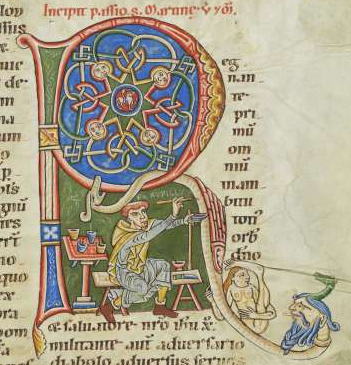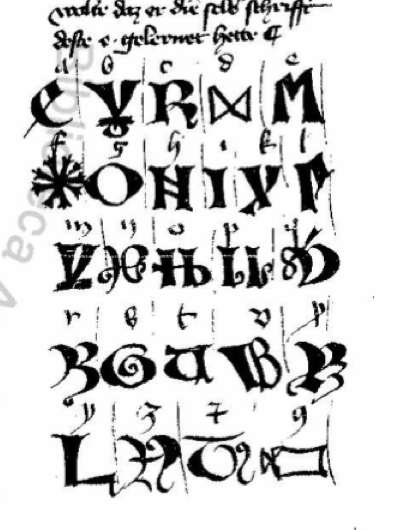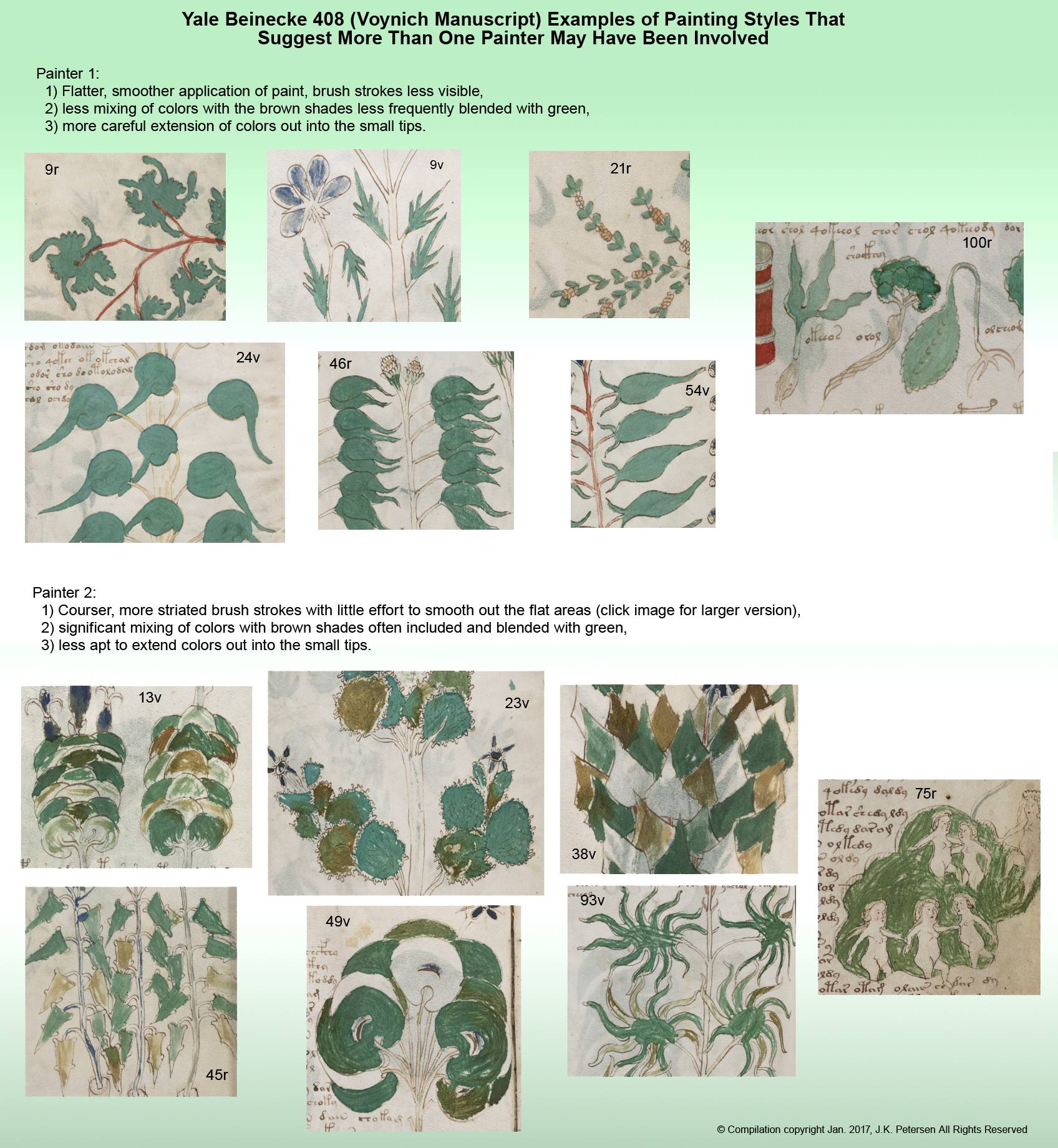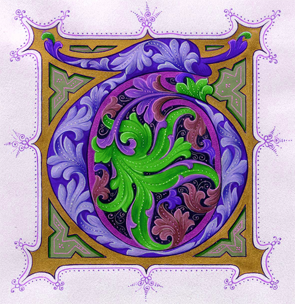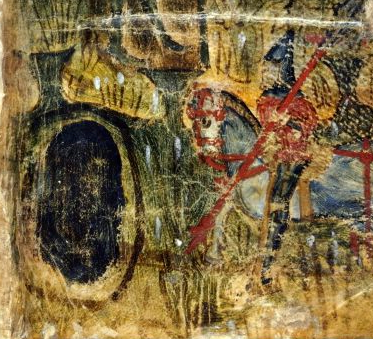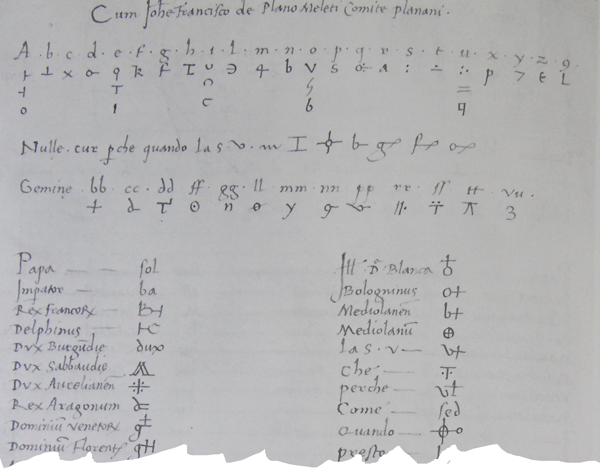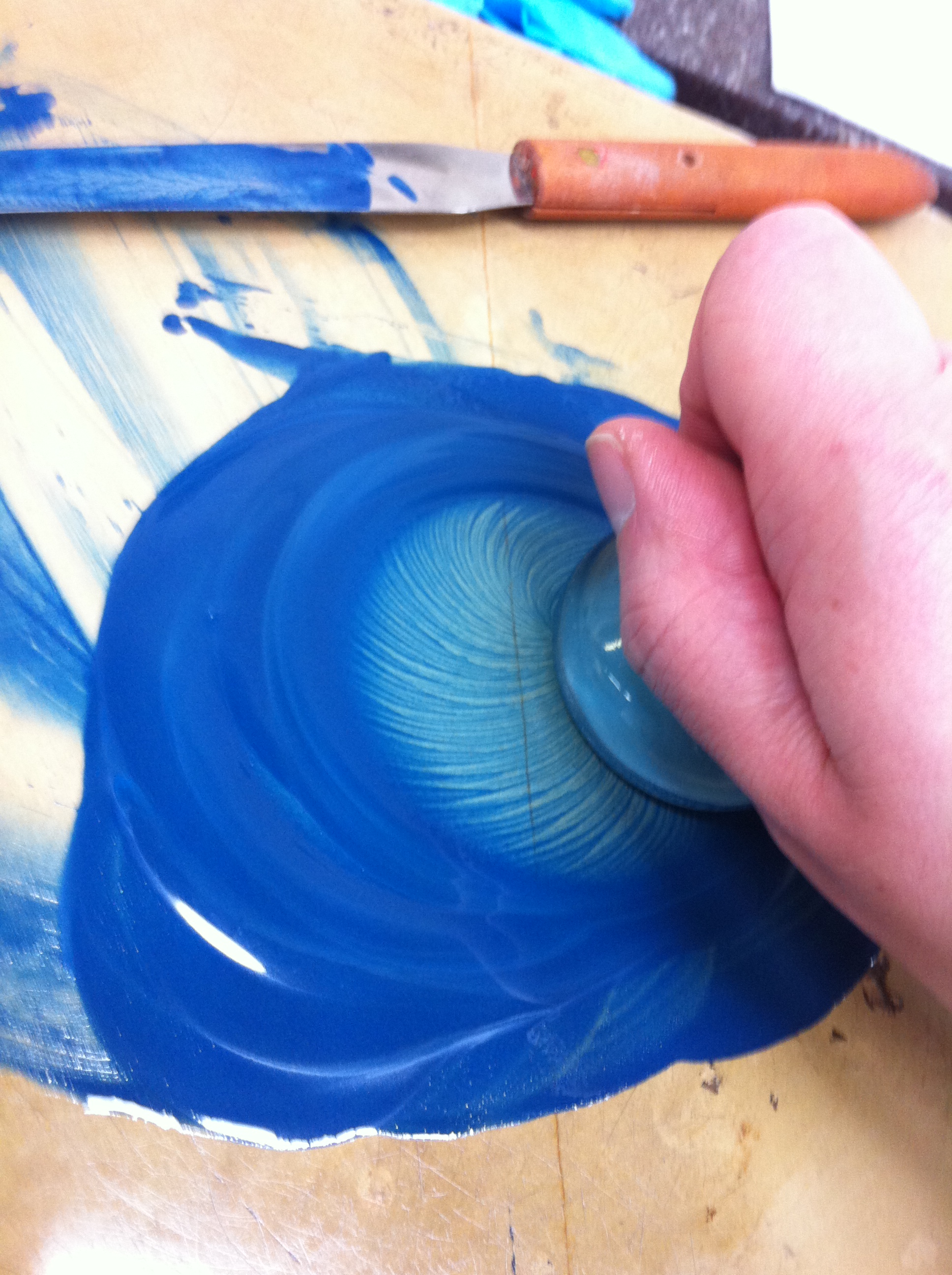
Artemis grinding azurite. You can see the picture full-sized and visit her interesting Jan. 14 blog on mixing pigments here (and note what she says about the time it takes to grind the minerals).
Much has been said about the possible origins and meanings of the VMS drawings but maybe the technical aspects of the paint should get some attention, as well.
In my previous blog, I posted some examples that suggest more than one person may have colored the VMS illustrations. I suspect there were at least two hands, based on differences in brushwork (smooth or scratchy), mixing of colors (reluctance to mix or propensity to mix), and attention to detail (extending the paint into narrow channels or avoiding tiny spaces).
I’ll have more to say about the painting styles in future articles, but I’d like to devote at least a couple of blogs to the composition of the pigments, starting with the color blue…
Back Story on the Testing
For a long time the Voynich manuscript went untested. In Wilfrid Voynich’s day, scientific examination was primitive compared to what we have now and may have been prohibitively expensive. In recent years, testing has improved, as has the availability of services. There may also have been some reluctance on the part of the library to subject the manuscript to tests, some of which can be invasive and some which might yield undesired results (such as evidence that the manuscript could be a fraud). Fortunately, the desire to know appears to have overcome any initial reluctance and the vellum and pigments have been sampled for radio-carbon dating and spectral analysis.
In April 2009, McCrone™ Associates, Inc., of Illinois, USA, provided a report on VMS pigments to the Curator of Modern European Books and Manuscripts at the Beinecke Rare Book and Manuscript Library. This report provides additional evidence and support for the early origin of the VMS. While it’s still possible to mix pigments from natural materials, it requires knowledge, skill, and access to sources to do so, and the use of some of these materials was essentially obsolete at the time Voynich acquired the VMS.
 To test the blue, McCrone took samples from the tip of a stem on folio 26r and reported that the blue paint “was unambiguously identified as ground azurite with minor amounts of cuprite, a copper oxide.” Azurite and traces of cuprite were also found on folio 78r in the blue water coming from the pipe near the top right. In noninvasive tests by other labs on a variety of manuscripts, azurite appears dark in near-infrared spectral scans. In the McCrone report it describes how the samples were mounted on slides and examined with spectrographic tests.
To test the blue, McCrone took samples from the tip of a stem on folio 26r and reported that the blue paint “was unambiguously identified as ground azurite with minor amounts of cuprite, a copper oxide.” Azurite and traces of cuprite were also found on folio 78r in the blue water coming from the pipe near the top right. In noninvasive tests by other labs on a variety of manuscripts, azurite appears dark in near-infrared spectral scans. In the McCrone report it describes how the samples were mounted on slides and examined with spectrographic tests.
Characteristics of Azurite
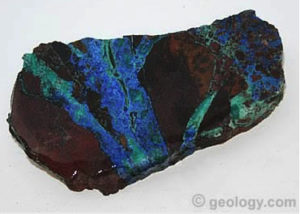
Azurite striations in rock fissures. Image courtesy of geology.com.
Azurite is a natural substance that occurs when water and copper ore interact under the right conditions to oxidize. It can range from a bright cyan to violet-blue to a deep slate-blue.
Azurite is a brittle substance—it scratches and breaks easily. It is beautiful, but only of limited use for jewelry-making. It is useful as a pigment, however, for creating paints and dyes.
In the VMS samples, the impurities (cuprite) were minor. The fineness of the powder depends partly on the patience of the grinder and whether it is sifted to remove larger particles. Despite its utility as a pigment, azurite has never been abundant, and the labor involved in finding and removing it from copper ore is considerable.
Use and Characteristics
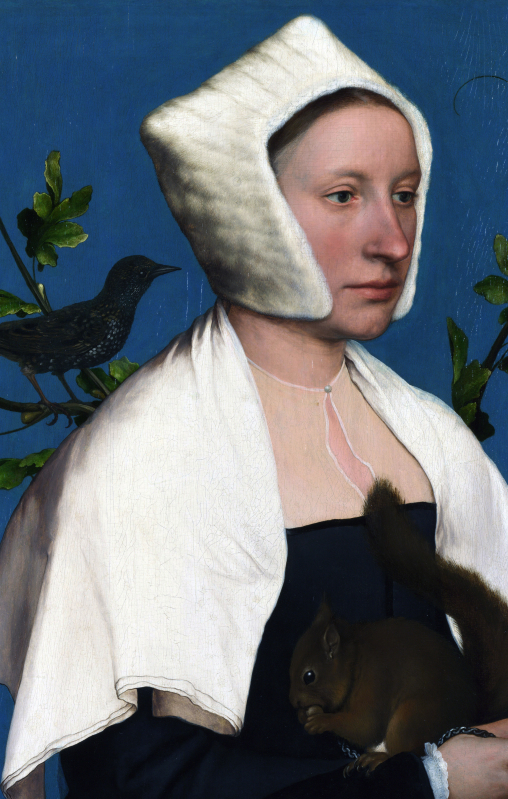
Detail of Hans Holbein’s “A Lady with a Squirrel and a Starling” (c. 1527), National Gallery of the U.K., was tested and found to include two layers of grainy azurite bound with linseed oil. Other very basic pigments were also detected, including copper resinate, lead white, lamp black, red earth, Cologne earth, and vermillion (a shade of red). The naturalism and variety of colors the master was able to achieve with a limited palette is remarkable. [Image courtesy of Wikipedia.]
Grinding and mixing with water, and optionally a binder (usually a gum binder), is all that is needed to turn azurite rock into paint. How easily it can be applied depends partly on impurities and how finely it is ground. Longer grinding makes it easier to mix and spread, but also creates a paler shade of blue that may be less desirable.
Mixing with chemicals other than simple gum binders can turn it darker, greener, or grayer, but this is an inexact process and mixing with other pigments to adjust the colors is often preferred to heating or adding oils or egg binders.
Azurite lightens over time, but darkens if heated, and may turn greenish if exposed to excessive heat or humidity. Despite its mutable nature, many medieval paintings and frescoes have retained their blue tones remarkably well (see Holbein painting) while others, such as “Madonna and Child Enthroned with Saints” by Raphael, have become darker or greener over time.
Azurite was popular among medieval and Renaissance painters. It was easier to obtain than lapis lazuli (an expensive semi-precious stone that was imported from northeast Afghanistan and possibly also from the mountains of Siberia, north of Mongolia).
Azurite was also widely used for embellishing manuscripts, as in the lavishly illustrated Pabenham-Clifford Hours MS 242 (England, early 1300s), which includes azurite throughout.
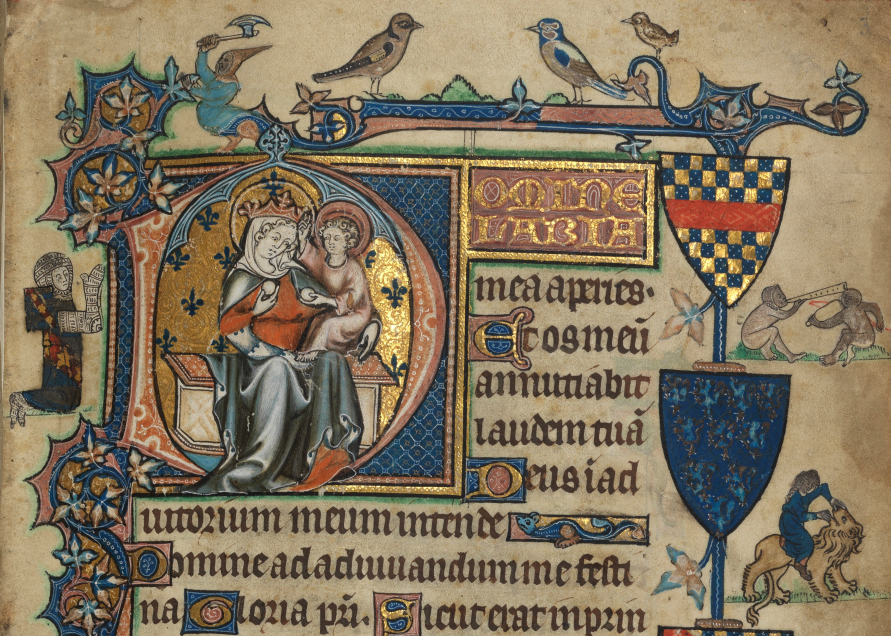
The Pebenham-Clifford Hours make liberal use of azurite for backgrounds, floral motifs, coats-of-arms, and embellished initials. Other pigments include carbon black, lead white, verdigris, and vermilion, and a red dye that may have been derived from cochineal. Skillful mixing of these pigments has created intermediary tones of gray, pink, and light blue. Note that despite the wide range of colors, purple is almost entirely absent.
Some medieval manuscripts were painted with both azurite and ultramarine, not only on the same page, but sometimes layered on top of one another, as in this example from the Fitzwilliam Museum.
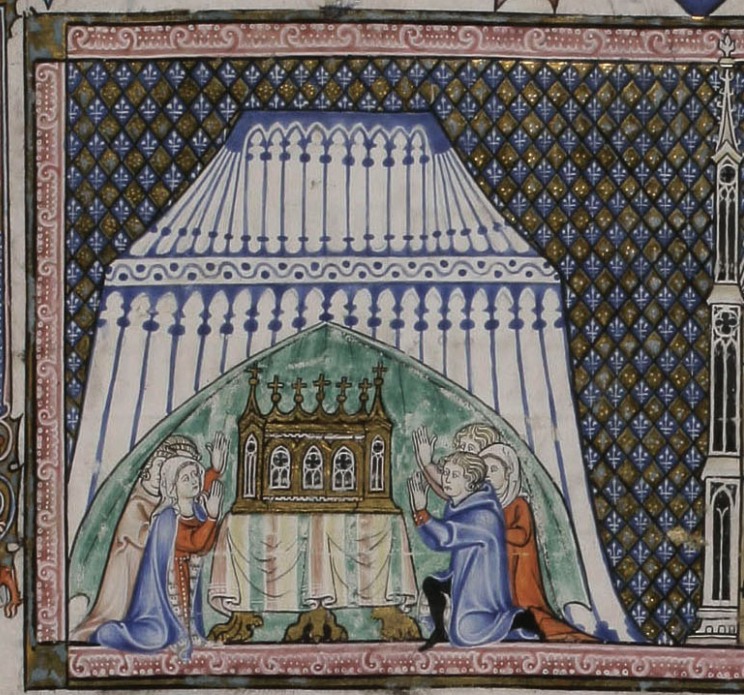
The Fitz Museum has examined the combined use of azurite and ultramarine in medieval manuscripts. In the Pontifical of Renaud de Bar MS 298 (commissioned by the Bishop of Metz from Lorraine in the early 1300s), the tent decorations are ultramarine, while many of the diamond-shaped background patterns include azurite. In other sections, as in some of the frames, the azurite has been laid down as a base color, with ultramarine embellishments on top.
Azurite was less expensive than ultramarine, and more stable and less complicated to prepare than some of the other natural blue pigments. Despite its relatively high cost, it became a mainstay for more than 300 years.
Which brings us to the big question… since azurite was used to create the blue paint for the Voynich manuscript, where was it from? Does it answer any questions about the manuscript’s origin? And why were the painters reluctant to mix it with red to create purple? This is too many questions to answer in one blog, so I’ll start with the availability of azurite…
Sources of Azurite
In ancient times, azurite was mined by the Egyptians on the Sinai Peninsula and used on the island of Crete to decorate ceramics. Pliny called it κυανός (“deep blue”). The modern name is derived from the Persian word lāžward (their word for lapis lazuli, and also the location where it was obtained), which was adapted into Latin and French to become azur, a more general term for blue and, eventually, azurite.

The Rio Tinto area in southern Spain has been mined for thousands of years, supplying a variety of minerals, including azurite, to the Mediterranean region. [Image courtesy of Wikipedia.]
In the middle ages, azurite was called
bleu de montagne and
Bergblau (mountain blue), as well as
azure d’Alemagna and
lapis Armenius (Armenian stone). The name “citramine” was used to distinguish azurite pigment from “ultramarine” (made from lapis lazuli). Culpeper mentions both Lapis Armenius and Lapis Lazuli as medicinal substances.
Azurite was extracted for centuries at the ancient Rio Tinto mines in southern Spain, possibly into the middle ages. The silver mines in Saxony may have been a minor source from about the 12th century, as were deposits in Sardinia. Azurite was used in the far east, as well as in pre-Columbian South America.
E.W. FitzHugh reports that in western China, azurite has been recorded in the literature at least since the 3rd or 4th century BCE and has been used in Japan since the seventh century. The basic eastern palette based on natural pigments is very similar to that of western Europe.

Gold mines in Sardinia, Italy, may have yielded azurite in the middle ages. [Image courtesy of Google Maps.]
In Europe, azurite was especially popular from the 14th century onward. Northern Hungary (esp.
Rudabánya), Spain, and France (especially Lyons), were significant sources of azurite. Chessy-les-Mines in mideastern France is known for its deep blue azurite called “chessylite” but it may not have been available until after the Renaissance. Northern Hungary was a significant source until Ottoman occupation made it unavailable to the west.
Granite impregnated with azurite has been found in India/Pakistan, but this may not have been known in the middle ages when prospecting was done with hand and axe rather than machines and dynamite. Azurite is mined in Namibia, Zimbabwe, and the Gold Coast, but African sources other than Morocco tend to be more recent.
As a mine gets deeper, azurite becomes less available since it requires a process of oxidation. Many ancient sources were tapped out and the mines closed. Synthetic substitutes such as Prussian blue began to appear in the 1700s and substantially replaced azurite, although a small revival has occurred, with azurite again being used by restorationists and experimental artists.
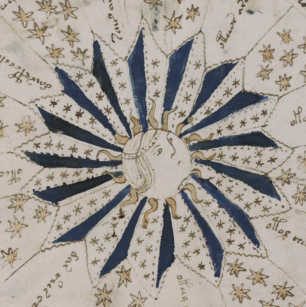 Azurite was not cheap or available in large quantities, but it was widespread. Those who had the resources to buy it, apparently could get it through the major trading centers, so it’s hard to know, exactly, where the VMS painters bought or made their pigments. We don’t even know for certain if azurite was used throughout the VMS, but it’s a piece of the puzzle and it may be significant that lapis lazuli, the more expensive shade of blue, was probably not used (further testing would be needed to confirm this), even though it was apparently available to those who really wanted it.
Azurite was not cheap or available in large quantities, but it was widespread. Those who had the resources to buy it, apparently could get it through the major trading centers, so it’s hard to know, exactly, where the VMS painters bought or made their pigments. We don’t even know for certain if azurite was used throughout the VMS, but it’s a piece of the puzzle and it may be significant that lapis lazuli, the more expensive shade of blue, was probably not used (further testing would be needed to confirm this), even though it was apparently available to those who really wanted it.
J.K. Petersen
© Copyright 2017 J.K. Petersen, All Rights Reserved
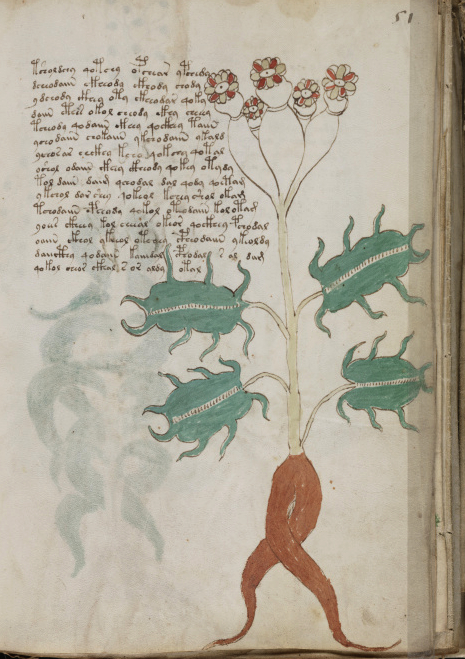 Plant 51v strikes me as more stylized than many of the other plants. The leaves look like beetles, the flowers have alternating colors that remind me of pinwheels (I call them spinnerheads), the roots look like a pair of medieval hose with legs crossed, including the long pointed toes that were all the rage.
Plant 51v strikes me as more stylized than many of the other plants. The leaves look like beetles, the flowers have alternating colors that remind me of pinwheels (I call them spinnerheads), the roots look like a pair of medieval hose with legs crossed, including the long pointed toes that were all the rage.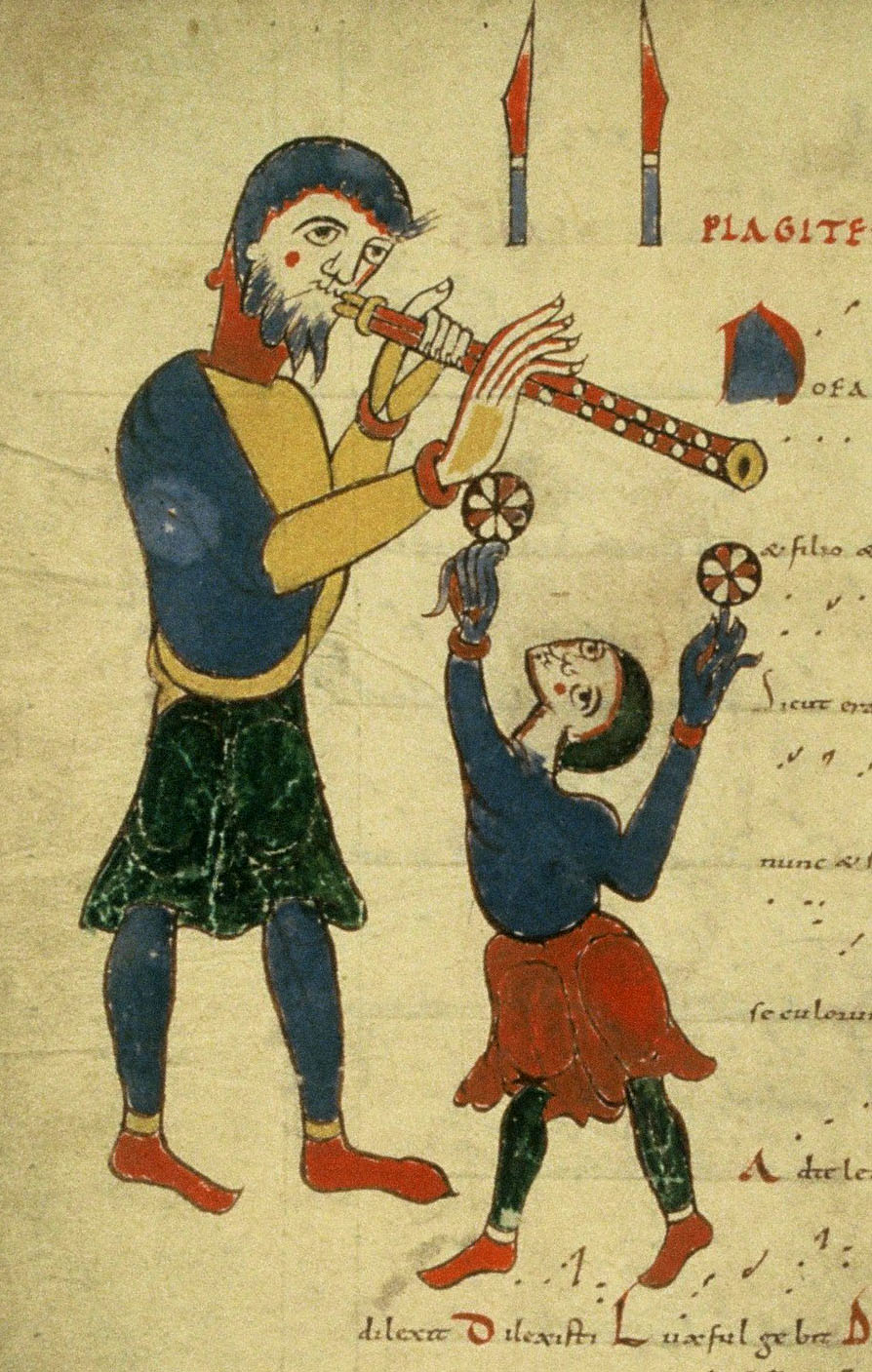 To his right is a person of small stature. Dwarves and midgets had limited opportunities for employment in the middle ages, so those with special talents often ended up as entertainers in royal courts. It is said that a gifted poet whose name may be featured on the Bayeau tapestry may have been a dwarf. Like the musician, the juggler has stage-makeup cheeks, very long, eastern-style fingers, and two objects that may be balls or some kind of round object that he is deftly spinning on his fingertips. There is a second folio that repeats this theme and shows the balls high in the air.
To his right is a person of small stature. Dwarves and midgets had limited opportunities for employment in the middle ages, so those with special talents often ended up as entertainers in royal courts. It is said that a gifted poet whose name may be featured on the Bayeau tapestry may have been a dwarf. Like the musician, the juggler has stage-makeup cheeks, very long, eastern-style fingers, and two objects that may be balls or some kind of round object that he is deftly spinning on his fingertips. There is a second folio that repeats this theme and shows the balls high in the air.